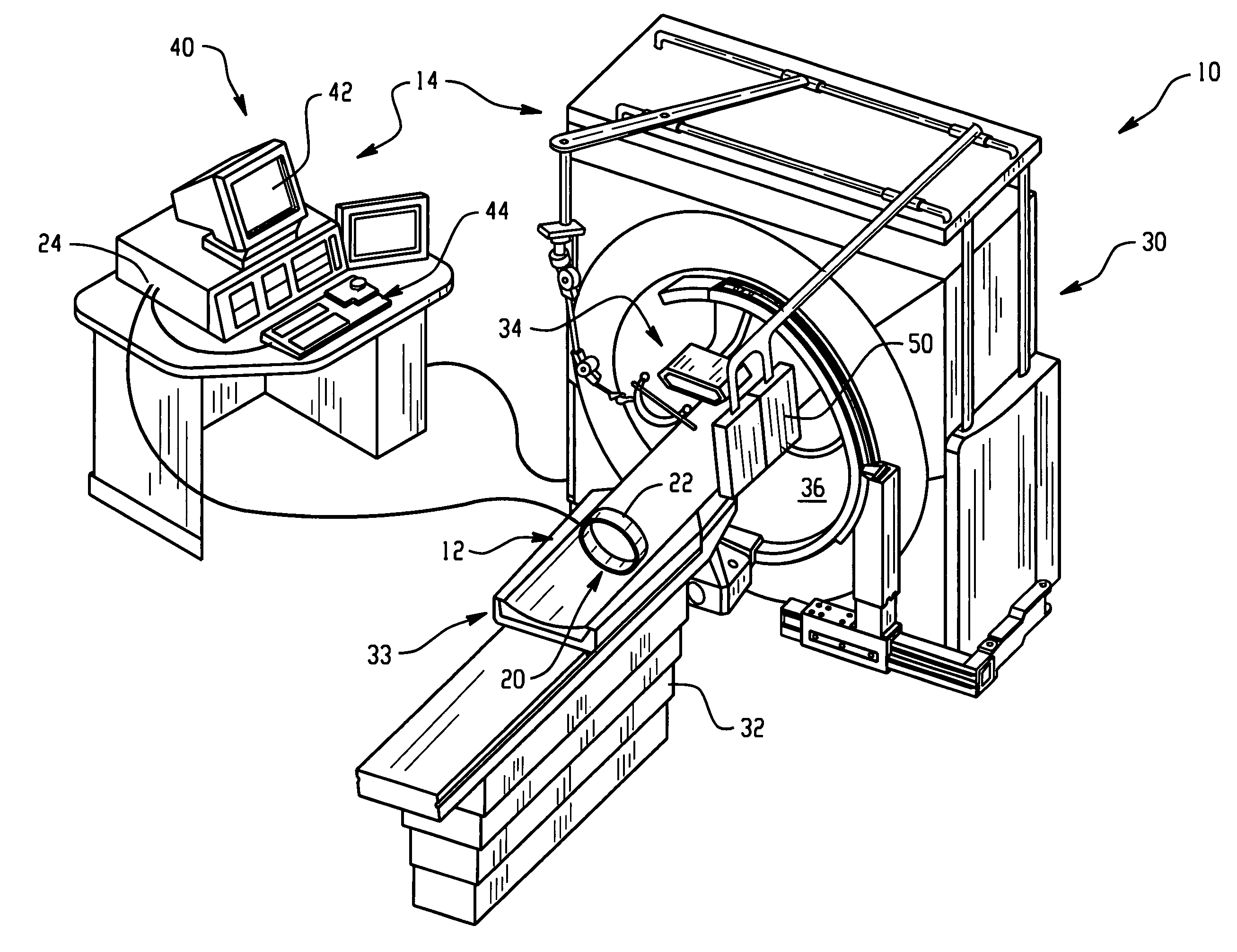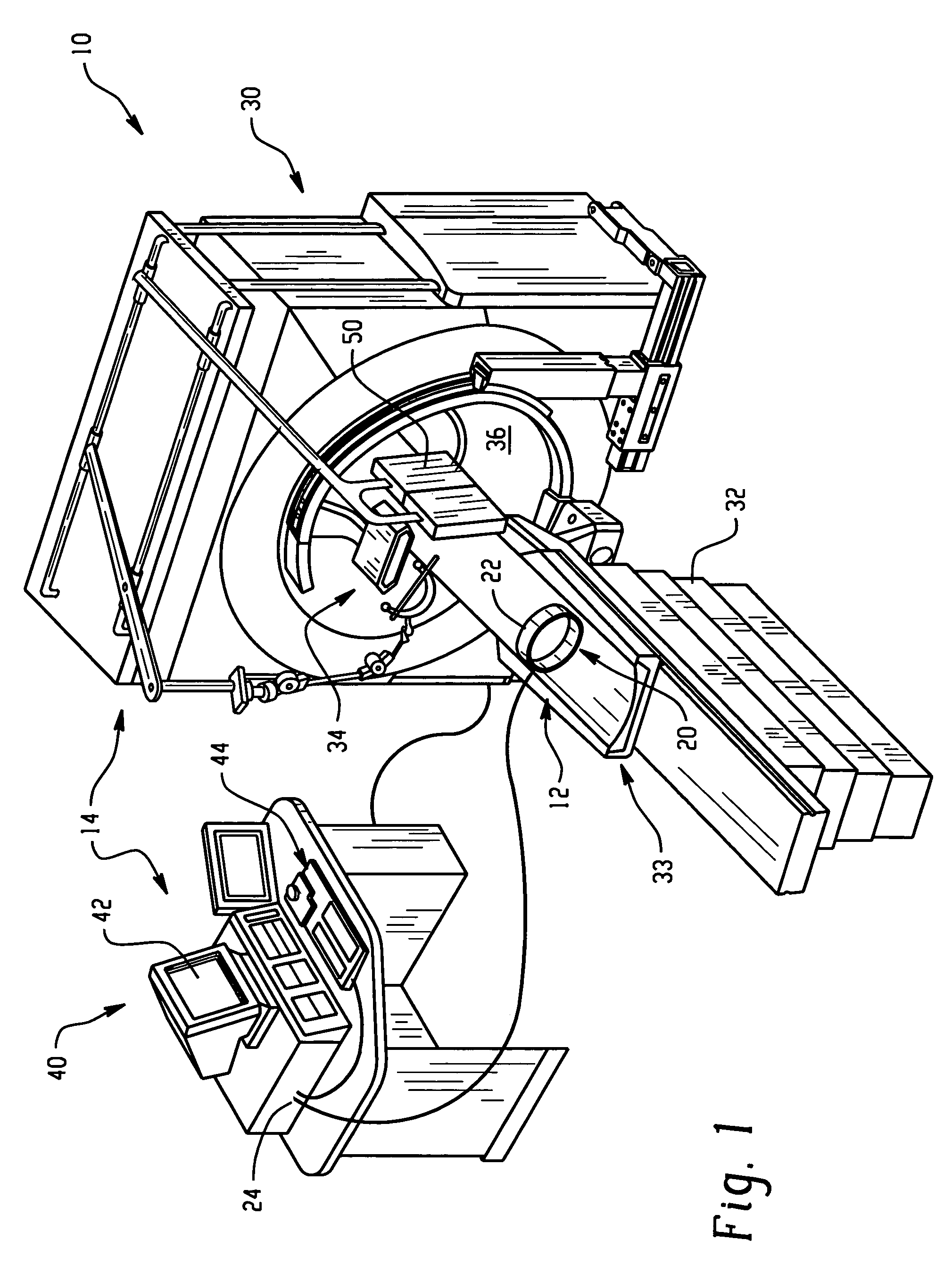CT integrated respiratory monitor
- Summary
- Abstract
- Description
- Claims
- Application Information
AI Technical Summary
Benefits of technology
Problems solved by technology
Method used
Image
Examples
Embodiment Construction
[0035]Referring now to the drawings wherein the showings are for purposes of illustrating the preferred embodiments of the invention only and not for purposes of limiting same, with reference first to FIG. 1, an integrated apparatus 10 includes a respiratory monitor system 12 and a CT imaging device 14. The integrated apparatus 10 is particularly well suited for planning and executing minimally invasive surgical procedures for in-vivo placement of instruments and / or objects within a patient during one or more breath holds.
[0036]The respiratory monitor system 12 includes a respiratory sensor 20 preferably formed as a belt 22 adapted for attachment around the abdomen or chest of a patient. In its preferred form, the respiratory sensor 20 includes an air bellows sensor and pressure transducer (not shown) for generating a signal corresponding to the displacement of a patient's abdomen during respiration. The respiratory sensor 20 is attached to the imaging device 14 at a suitable electr...
PUM
 Login to View More
Login to View More Abstract
Description
Claims
Application Information
 Login to View More
Login to View More - R&D
- Intellectual Property
- Life Sciences
- Materials
- Tech Scout
- Unparalleled Data Quality
- Higher Quality Content
- 60% Fewer Hallucinations
Browse by: Latest US Patents, China's latest patents, Technical Efficacy Thesaurus, Application Domain, Technology Topic, Popular Technical Reports.
© 2025 PatSnap. All rights reserved.Legal|Privacy policy|Modern Slavery Act Transparency Statement|Sitemap|About US| Contact US: help@patsnap.com



